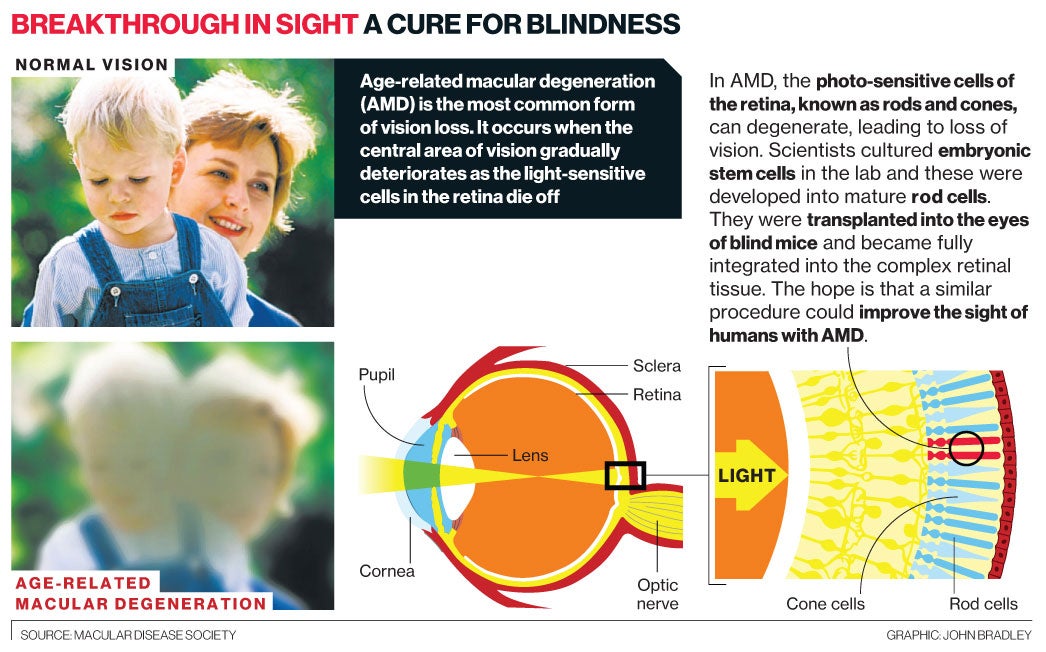Cells to restore eyesight are grown in lab and transplanted into blind mice
Artificial photoreceptors integrated into retina after being transplanted into blind mice

The prospect of restoring the sight of blind people with stem-cell transplants has come a step closer with a study showing that it is possible to grow the light-sensitive cells of the eye in a dish with the help of an artificial retina, scientists said.
For the first time, researchers have not only grown the photoreceptors of the eye in the laboratory from stem cells but transplanted them into eyes of blind mice where the cells have become fully integrated into the complex retinal tissue.
So far the scientists have been unable to show any improvement in the vision of the blind mice – but they are confident that this will soon be possible in further experiments, which should enable them to move to the first clinical trials on patients within five years.
Professor Robin Ali of University College London, who led the research at the Institute of Ophthalmology and Moorfields Eye Hospital, said that the technique could lead to stem cell transplants for improving the vision of thousands of people with degenerative eye disorders caused by the progressive loss of photosensitive cells.
“The breakthrough here is that we’ve demonstrated we can transplant photoreceptors derived from embryonic stem cells into adult mice. It paves the way to a human clinical trial because now we have a clear route map of how to do it,” Professor Ali said.
The loss of photosensitive cells, the rods and cones of the retina, is a leading cause of sight loss in a number of degenerative eye diseases, such as age-related macular degeneration, retinitis pigmentosa and diabetes-related blindness.
Professor Ali and his team extracted stem cells from mouse embryos and grew them into light-sensitive rod cells with the help of an artificial retina growing in a laboratory dish. This allowed the rod cells to develop the complex three-dimensional structure that is important for them to function correctly.
“Over recent years scientists have become pretty good at working with stem cells and coaxing them to develop into different types of adult cells and tissues. But until recently the complex structure of the retina has proved difficult to reproduce in the lab,” Professor Ali said.
“The new 3D technique more closely mimics normal development, which means we are able to pick out and purify the cells at precisely the right stage to ensure successful transplantation. The next step will be to refine this technique using human cells to enable us to start clinical trials,” he said.
A separate clinical trial with embryonic stem cells is already under way in Britain and the United States to treat Stargardt’s disease, an incurable eye condition where there is a loss of the retinal cells that support and protect the light-sensitive cells.
The study, published in the journal Nature Biotechnology and funded by the Medical Research Council, involved the transplant of about 200,000 artificially grown rod cells into the retinas of night-blind mice, which lacked the rod cells that provide vision in low-light conditions.
Join our commenting forum
Join thought-provoking conversations, follow other Independent readers and see their replies
Comments